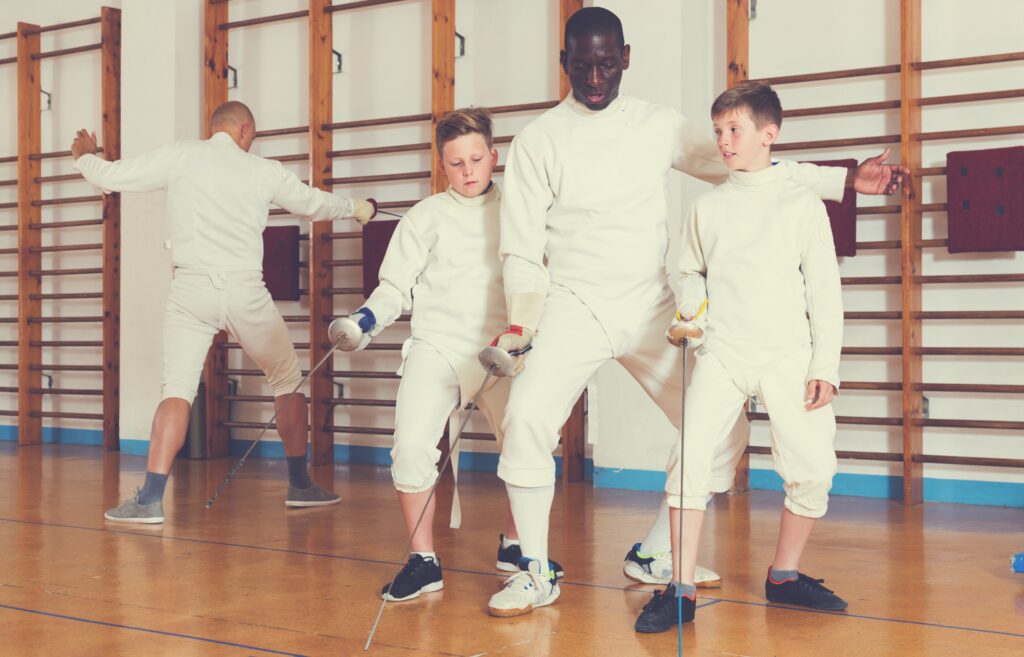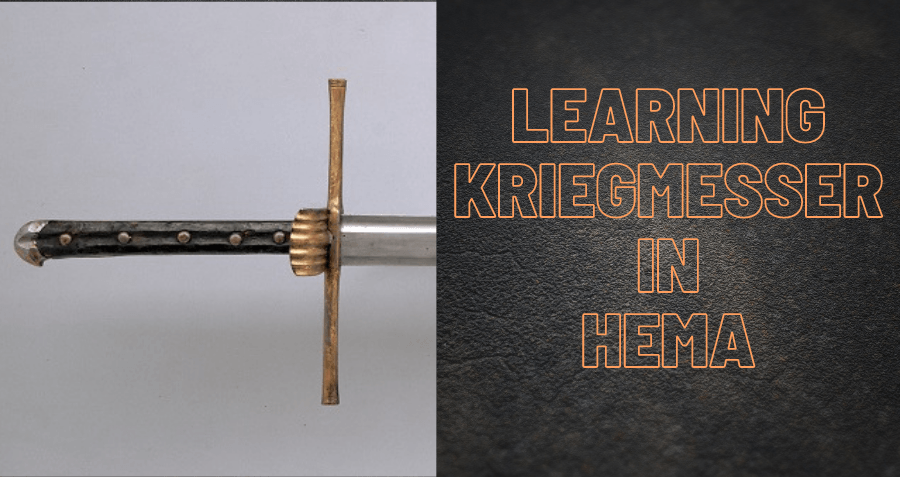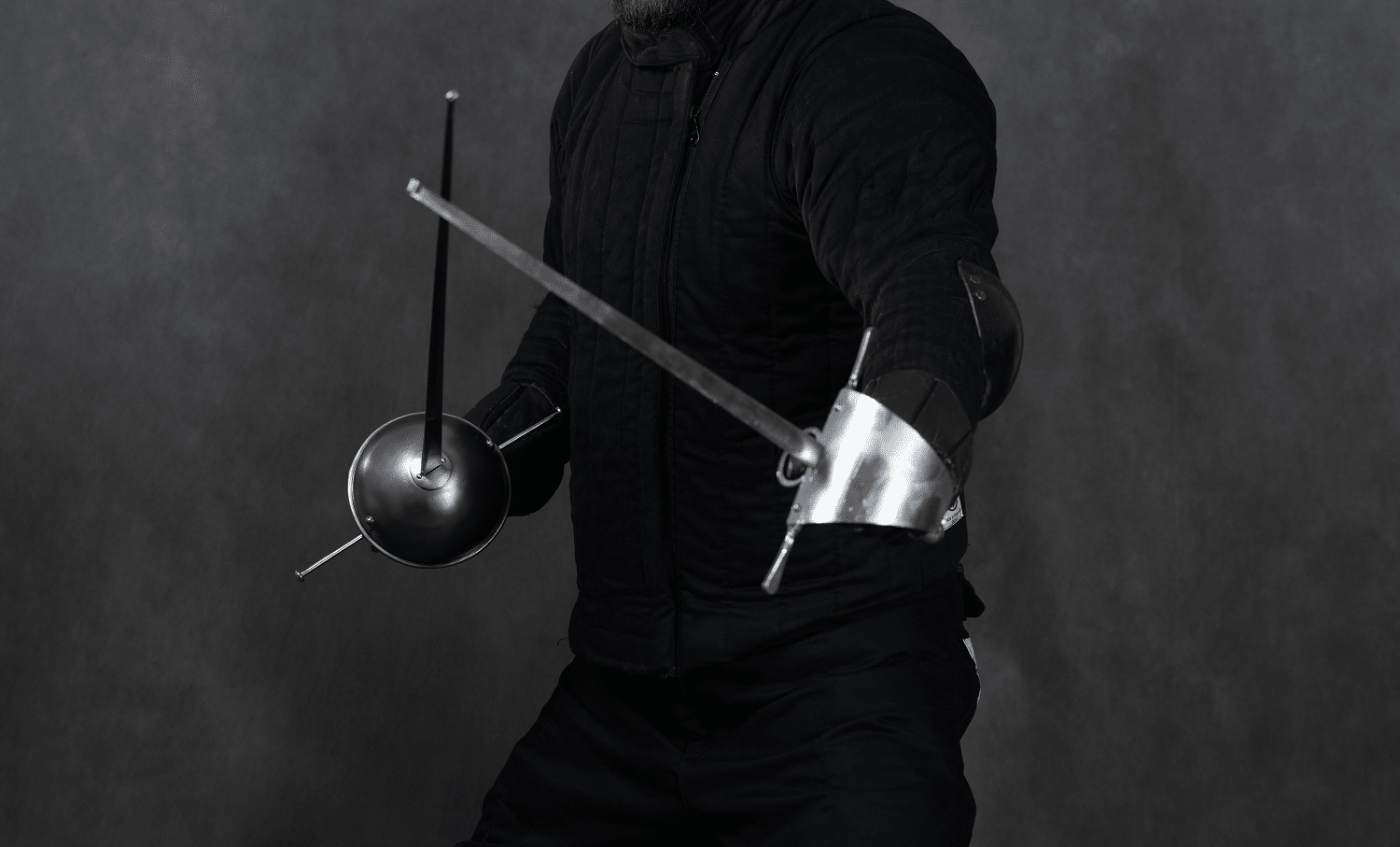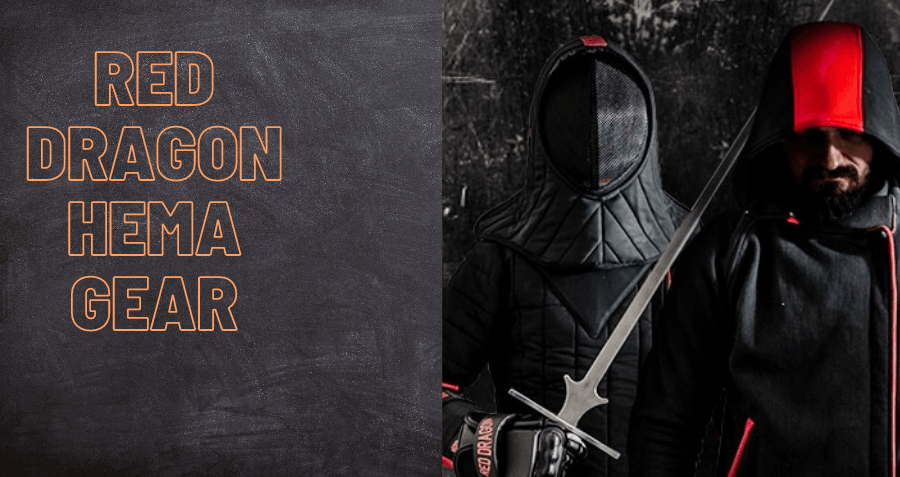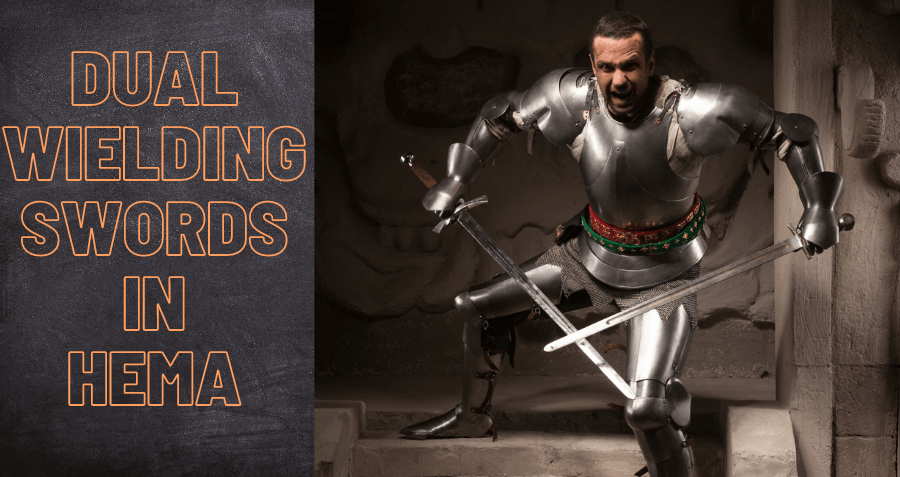Historical European Martial Arts classes can benefit kids in various ways; it helps kids learn discipline, work in teams, build self-esteem, gain control of their emotions and is also a form of exercise. The classes can be done at home with parents as instructors or in clubs instructed by a HEMA teacher. Teaching the martial arts to kids is, however, challenging and may need you to do some research especially when it comes to teaching swordsmanship to children.
Why Teach Children to Use Swords?
Fencing makes one who can do it well
Into a formidable and capable man
Well-proportioned and sturdy.
Light, fit, and nimble – ready for anything
Courageous and undaunted against the enemy
Valiant and stout-hearted, daring manfully
Bold in war; eager to win praise, honour and victory
Emboldening hundreds around him with ease
He makes you marvel at his fencing skill
Christoff Rösener, 16th century fencing master and author of Ehren Tittel und Lobspruch der Ritterlichen Freyen Kunst der fechter (“Honors and Praise to the Free and Chivalric Art of Fencing”)
The sword is a noble weapon and to master its traditions can naturally impart knightly virtues. It is not merely a tool of violence, but also an instrument through which the spirit of a warrior can be cultivated. This includes practicing right conduct and etiquette toward people such as training partners, and behavior toward training partners in a fencing hall can influence how a fencer interacts with others in the general public.
We need also to reflect on aspects of modern culture that are not so healthy for our young and for which HEMA can be a potential remedy to.
Today it is ever more common for children, especially young boys, to cut themselves off from the world and isolate themselves in their rooms to play videogames, especially of the fantasy genre. The appeal for them to sequester themselves in these fictional fantasies makes sense, as if you have an interest in knighthood, swordsmanship and other anachronisms you generally have no outlet for these things except through playing video games. Even if the games are played through the internet with others, these people are rarely more than strangers and their friendship can often only be maintained by isolating oneself in a room.
While it is not necessarily unhealthy to play video games, it is unhealthy to do so at the expense of not developing athleticism or normal socialization skills which are valuable for everyday life, especially once becoming an adult. One of the great things is that Historical fencing is often able to spark an interest in sports that many people with an interest in video gaming often do not have for any other kind of sport, and provide them with a group of peers they can befriend and socialize with, making lifelong friends.

Furthermore, teaching a child to be safe with edged weapons like knives and swords is a valuable lesson that can save lives. Children, by nature, are curious individuals. Teaching them about weapons helps quench their curiosity in a safe manner. Tools such as knives and swords can be dangerous in untrained hands. The point of an effective weapons training program is so their hands are no longer untrained. Additionally, youth cannot learn how to be responsible if they never have the opportunity to be responsible, and there is few greater responsibilities than how to handle a sword.
Is teaching children to use weapons moral?
Now there are some organizations who focus heavily on how to keep children safe to the point that all kinds of normal habits become avoided by the child. We believe this sends the wrong message to children — it incorrectly teaches them they are potential victims who must be safeguarded and rescued by adults. Yet there is nothing that human civilization can do to completely eliminate violence, for bearing down on another with threats and infliction of pain is the most direct way for an individual to obtain what they want from that person. There are even those disturbed individuals who become infatuated with inflicting harm on others, becoming torturers. This is a difficult truth about humans we must face and accept, and in so accepting understand we must prepare children for.
While we can cultivate goodness in ourselves, not everyone can be forced to do so. Some prefer to cultivate evil. Good must therefore champion against evil, and a goal of martial art training has traditionally been to develop such champions in society.
It is our position that children should be taught they are equally responsible for their own safety and the safety of others, and how to defend themselves from all manner of threats should the need arise. They should be able to take care of themselves in an emergency when no adults are around. If nothing else, martial arts training teaches virtues such as courage, patience and critical thinking skills which are useful in these kinds of emergencies.
Further to this, many parents elect to enroll their children into martial arts when they find their child has behavior problems and hope that the structure of martial arts will straighten the child out. It is true; martial instruction can forge anger and frustration into strength of character. However many of these schools may not teach morality and etiquette as strictly as that which a martial arts youth program should demand of children. We must always remember that HEMA teaches the knightly arts of combat, therefore we must not simply cultivate warriors; our goal should be to cultivate knights.
To teach kids the knightly arts of combat you need to be well prepared and have in mind that teaching kids is different from teaching adults. Although kids have a fast-learning brain, they have short attention spans and can quickly get frustrated.
Here are some of the ways you can teach kids Historical European martial arts, with the above two factors in mind:
1. Have appropriate equipment for teaching children swordsmanship
HEMA is a very young combat sport as far as martial arts go, so there is not yet a lot of specialty equipment catered to the youth market. However we can borrow equipment from other disciplines and sports, much how adults first developed kits for HEMA.
For long sword practices teenagers can use short steel swords, sometimes even arming swords, in place of full size federschwert (feders) as well as shorter length synthetics, but younger children should use foam swords. There is basically two kinds here, padded foam swords and LARPing swords. Although neither of these will be very good for teaching edge alignment it will be more economical and easier for the kids to use this equipment to learn the basic fundamentals in a safe way.
As a note, it is a generally terrible idea to entrust a steel sword trainer to a young child, even a blunt one, as they can easily trip and fall down on the blade, injuring themselves or another. For this and many other reasons, traditionally children younger than twelve years old were not taught weapons based martial arts so it is only with training weapons made with foam and other synthetics that this can be safely done today.
For other kinds of weapons such as rapiers, youth equipment from epee fencing can be borrowed and may be useful even if it’s not strictly meant for rapier fencing. There is however also some products meant for kids such as this equipment produced by PBT that is for rapier simulations.
2. Create a lesson plan.
Always have a lesson plan that has plenty of back-up activities you can include if kids get bored with the class. Kids find it challenging to maintain their energy and interest in a class because they have a short attention span. You can add games or warm-ups amidst the art class to distract them from the seriousness of what you are teaching. There are some games meant for the classes that you can incorporate to keep the class fun and, at the same time, ensure that they learn some skills from the game. Games like partner tags can help instill cooperation and also keep the kids entertained.
Other than including games into class activities, let the kids make noise. Children love screaming, so allow them to do so. Screaming gives kids a sort of freedom in the class.
3. Promote partnership.
One of the main reasons why the martial arts are important to teach kids is because it instills discipline. Group the kids into pairs and lay down rules for them that will help them learn how to work together. Kids tend to be self-centered, and teaching them cooperation will help them be mindful of others. Make it clear in your rules that they can only be rewarded for their success if their partner also succeeds. When kids feel like every right thing they do can only be rewarded if their partner also does right, they become responsible for each other’s actions. The responsibility will help lessen the chaos in your class, making teaching less hectic for you, because the kids will keep each other in check.
4. Make the classes short.
Classes need to be short for kids to learn what you teach them. Long classes are tiresome and eventually make the kids lose their concentration and energy. Once one kid loses his or her energy and decides to sit down, it can make the other kids relax too, and soon enough, your entire class will be seated. Instead of a two-hour class, have a one hour class with a 5 minutes break after every 15 minutes. During the five minute breaks, you can engage your kids in some warm-ups to regain their attention and energy. The warm-ups should be less strenuous compared to adult warm-ups so that you do not tire them more. The aim of teaching kids sword fighting is to make them love it, not force them to be excellent at it.
5. Give kids a lot of attention.
Kids need a lot of attention to ensure they do not get into mishaps and keep them motivated. Your kids need to feel like they are making progress for them to continue taking the classes. Kids easily give up when their efforts go unnoticed. Involve the other kids in applauding a kid who succeeds in something. It reassures the kids that their efforts do not go unnoticed. Furthermore, do not patronize them when they fail to do something correctly. Guide your kids, show them how to place their hands and feet then do it with them. Mimicry is one of the best ways through which kids learn.
6. Prioritize foundation skills.
Teaching kids martial arts is not similar to teaching adults. Since kids lack experience in life and are beginners in the class, do not focus on their fine motor skills. Foundation skills are a priority for children taking the martial art classes. You need to be patient with the kids and their progress.
7. Use a positive and simple language.
Use a firm but gentle language when instructing and communicating with the kids. Kids have less knowledge and experience compared to adults; therefore, try to use simple terms during instructing that they can understand. You can make a song or a mnemonic that will help the kids remember what you teach.
Avoid giving harsh penalties in the form of exercises. Children will then relate physical exercise to punishment, making them lose interest as well as develop a disdain for physical activities as they associate it with punishment. You can punish the kids by having a time out and very disruptive kids may need to be removed from classes after speaking to their parents. While your job as an instructor is to teach them and be a role model you will find it too challenging to discipline a very disruptive child as you are not their parent so efforts to do so will likely be unsuccessful.
8. Tailor instructions to the kid’s age.
Kids of different age groups will respond differently to different instructions. Teaching children around 7 to 9 years old, for example, will require more straightforward instructions since most of them are new to the class. Children aged 12 and above will need instructions with more responsibility since foundation skills have already been established. Also, have children of the same age group in the same class to make teaching easier.
9. Make repetition a habit.
Repetition is a very effective way of teaching children. Take them through each instruction over and over again until every kid grasps it.
10. Have a grading system.
Have belts of different colors for each grade. When a kid with a yellow belt sees his friend has upgraded to an orange belt, he is bound to work harder to that he, too, can receive an orange belt. Belts will instill motivation to the kids since they all want to be winners. Even if you don’t use belts specifically some kind of grading system is essential to teaching children.
Additionally, do not wait for five months to grade the kids, grade them at the end of each month because kids lack the patience of adults. They need to see they are making progress early enough, for their motivation not to fade.
11. Review your classes.
You need to review your teaching methods. Determine what teaching methods are effective and which methods are ineffective, then make the necessary changes to improve your teaching. You can grade your teaching based on the progress your kids are making. If you find that the progress is not sufficient for that amount of period, search for new methods of teaching. Also, change the activities you include during the class to prevent monotony. Kids eventually get tired of doing the same warm-ups and playing the same games every day. Have new activities after every two weeks, if possible.
12. Arrange tournaments.
Tournaments done either monthly or quarterly are an essential way to engage the kids’ parents in the class. Parents need to see the progress their children are making, and children require validation from their parents. When kids notice the parents cheering them on they develop more interest and look forward to showing their parents what they have learned in the next tournament.
****
We hope this article is useful and will encourage more schools to develop youth Historical European martial arts programs.
If you’d like to learn more information about historical fencing practices please check out our Learn HEMA page for a guide to learning about the historical weapon that interests you. You can also find more guides we’ve written about other topics at our Helpful Guides page.
You can also join the conversation at our forums or our Facebook Group community.
Related posts:
- How to Clean and Care for Your swords and Federschwert in HEMA (Plus Storage and Transport Advice)
- How to Create an Amazing Website for Your HEMA Club Cheaply and Quickly
- The Best Historical European Martial Arts YouTube Channels to Watch
- Important Safety Tips for Historical European Martial Arts Fencing with Swords
